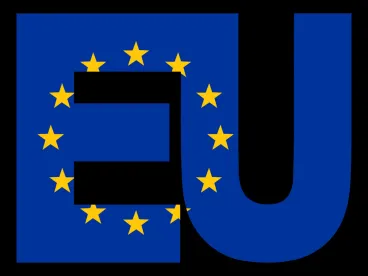The European Commission (EC) published, in September 2022, a long anticipated proposal for a regulation banning the selling of forced-labour goods in the EU.
The proposal is essentially introducing a ban on placing, making available on the EU market, or exporting from the EU market, any products that have been made using forced labour. EC President Ursula von der Leyen had announced the intention to tackle this issue through legislation in the 2021 State of the Union speech. While the proposal is incorporated into the EU’s human rights policy priorities, it is also underpinning the corporate accountability policies being developed by the EU, specifically the due diligence regime, under the proposed corporate sustainability due diligence directive (CSRD). The proposal also sets the scene for a more holistic approach for controlling supply chains in the EU, as it will complement existing measures, namely the regulation on foreign subsidies, the proposed carbon border adjustment mechanism, the proposal for deforestation-free products, and the single market emergency instrument.
What Does It Entail?
The scope of the proposal covers all economic operators and all products made available within the EU market, meaning both products made in the EU for domestic consumption and for export, and imported goods. As such, all products, irrespective of their source, are covered in the proposal – as currently drafted – as long as there is a presumption of forced labour at any stage of the product development (extraction, harvest, production or manufacture).
Contrary to the US’ Uyghur Forced Labour Prevention Act, the EU’s proposal does not introduce an import ban on products originating from a specific region, nor does it target specific countries, companies, or industries.
National competent authorities will be empowered by the proposal to carry out investigations and take actions where there are concerns of possible violations of products placed, made available or exported where forced labour may have been involved. A two-tier investigative process is introduced:
-
National competent authorities must demonstrate substantiated concern that, at some stage of the supply chain, there was forced labour
-
Once such a substantiated concern can be justified, the investigation process is launched, whereby national competent authorities could initiate specific measures that would prevent a product from entering or leaving the EU single market, based on the forced-labour risks
Nevertheless, a competent authority will be required to verify – with the economic operator(s) concerned – the measures taken to mitigate a forced-labour ban in their operations and value chains, before launching a formal investigation. In case of a robust and effective due diligence process on forcedlabour risks, the economic operator can be exempted from the investigation, whereas if the concerns are substantiated, the investigation will be formally launched.
While the proposed regulation does not identify specific sectors, it encourages competent authorities to focus on the economic operators whose sectors/products have typically been associated with risks of forced labour (e.g. textiles, mining and agriculture), taking into account the size and resources of the economic operators, and the quantity of related products, as well as the scale of suspected forced labour.
In the case of a violation, national authorities will be empowered to adopt a time-bound decision banning the products from being placed, made available or exported from the single market, accompanied by an order to withdraw the relevant products from the single market. Customs authorities could also then suspend or refuse the release and circulation of such products in the market. To implement this process, customs authorities will be requesting information by economic operators.
The EC is due to assist the implementation process of the proposal by issuing guidelines, after the entry into force of the regulation, on:
-
Guidelines on forced-labour due diligence through existing EU legislation and international recommendations
-
Guidelines determining what information can be used as risk indicators of forced labour
-
A list of publicly available and relevant information sources linked to the implementation of the regulation
In terms of timeline, as the legislative proposal was submitted to the co-legislators (i.e. the European Parliament and the Council of the EU) for their review, it is uncertain when and how the proposal would be defined in the end. Either way, with the EC’s proposed two-year transition process, as well as an approximate timeline for the negotiation process, it is unlikely the rules will become effective before 2025.
Considerations for Businesses
Companies bear the responsibility within the legislative proposal to take appropriate measures to identify and eliminate any forced-labour risks in their supply chains. However, the level of measures largely depends on the sector and the supply chain within which a company operates, as well as the type of product and the company resources.
Nevertheless, the proposal cannot be seen in isolation with respect to a company’s obligations and responsibilities, as the specific measures or due diligence obligations for companies are addressed in another piece of legislation, still under negotiation. The proposed CSRD establishes the EU’s corporate accountability tools and procedures that companies operating in the EU should be adhering by. Together with the corporate governance practices addressed within the CSRD, the forced labour ban complements the EU regulatory framework for environmental, social and governance (ESG) reporting for companies operating in the EU.
Businesses can face important reputational risks in the case of a possible violation. As such, it will be essential for companies to already map out the supply chains to determine whether there are possible forced-labour risks that can be identified in specific countries, suppliers, or subcontractors. Additionally, companies must start engaging in creating internal processes to ensure there are plans in place to mitigate and eliminate such forced labour risks. An important distinction in the legislative proposal that we expect would be critical for businesses to consider, is that in the case that a product has been associated with forced labour as a result of an investigation, economic operators would not be required to recover products which have reached the end-users/ consumers in the market.







 />i
/>i

